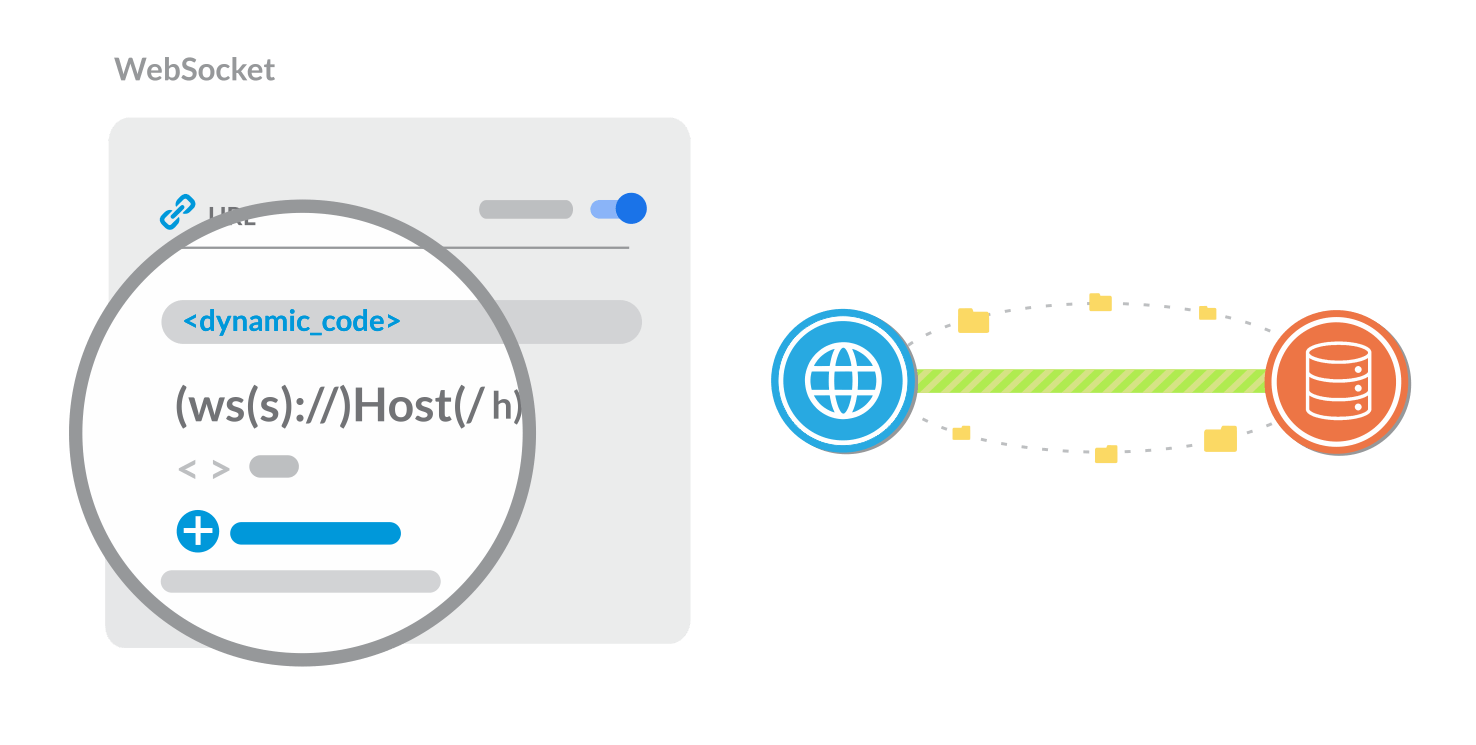- 1-888-479-0741
- sales@dotcom-monitor.com
- Minneapolis, MN, USA
WebSocket Monitoring
Monitor WebSocket availability, performance, content, and errors. Ensure seamless, bidirectional communication for apps like live chats, messaging, and stock tickers.

Real-Time Performance
Advanced WebSocket Monitoring for Optimal Performance
Ensure your WebSocket endpoints are communicating properly with your users and other web services. Get real-time, instant feedback on WebSocket availability and performance.
Comprehensive WebSocket Monitoring Insights
With Dotcom-Monitor, ensure your WebSocket endpoints communicate flawlessly.
Endpoint Checks: Monitor WebSocket URLs for availability, performance, content, and potential errors.
Data Transmission: Post connection, our system listens to socket events, sending necessary messages and waiting for responses.
Response Validation: Verify message strings from WebSockets, checking for specific keywords to ensure accurate data exchange.
SSL Certificate Verification: Ensure the security and integrity of your WebSocket connections.

Key Features
Key WebSocket Monitoring Features
Unlock a suite of WebSocket monitoring tools to guarantee the best performance and reliability!
Bidirectional Monitoring
Keep an eye on both incoming and outgoing data for a holistic view.
String/Binary Data Support
Whether it's in string or binary format, we handle the transmission seamlessly.
Real-Time Alerts
Get instant notifications for any potential communication disruptions or errors.
Global Monitoring Locations
Understand WebSocket performance from various points for a truly global perspective.
Increase Efficiency and reliability
Optimize Real-Time Communications with WebSocket Monitoring
Take advantage of Dotcom-Monitor’s solutions to boost the efficiency and reliability of your WebSocket-based applications. Ensure every message is delivered without delay or error. Find problems and fix them fast.
Tailored WebSocket Monitoring for Today's Dynamic Applications
Dotcom-Monitor provides a user-centric dashboard that gives a clear picture of WebSocket performance. From single apps to large platforms—our tools ensure every byte of data finds its way.
Get answers
WebSocket Monitoring—Frequently Asked Questions
Below are some of the most common questions about WebSocket monitoring. If you have additional questions, feel free to contact us.
WebSockets offer TCP-based bidirectional communication ideal for real-time applications like messaging, gaming, and live news feeds.
Through continuous endpoint checks, data transmission monitoring, and real-time response validation, we guarantee WebSocket’s peak performance and reliability.
WebSockets are essential for real-time applications. Monitoring ensures consistent communication, high performance, and immediate error detection.
With features like bi-directional monitoring, real-time alerts, a user-friendly dashboard, and global testing locations, we offer a superior WebSocket monitoring experience.
Get Started Today with WebSocket Monitoring
30-Day Free Trial. No Credit Card Required.


